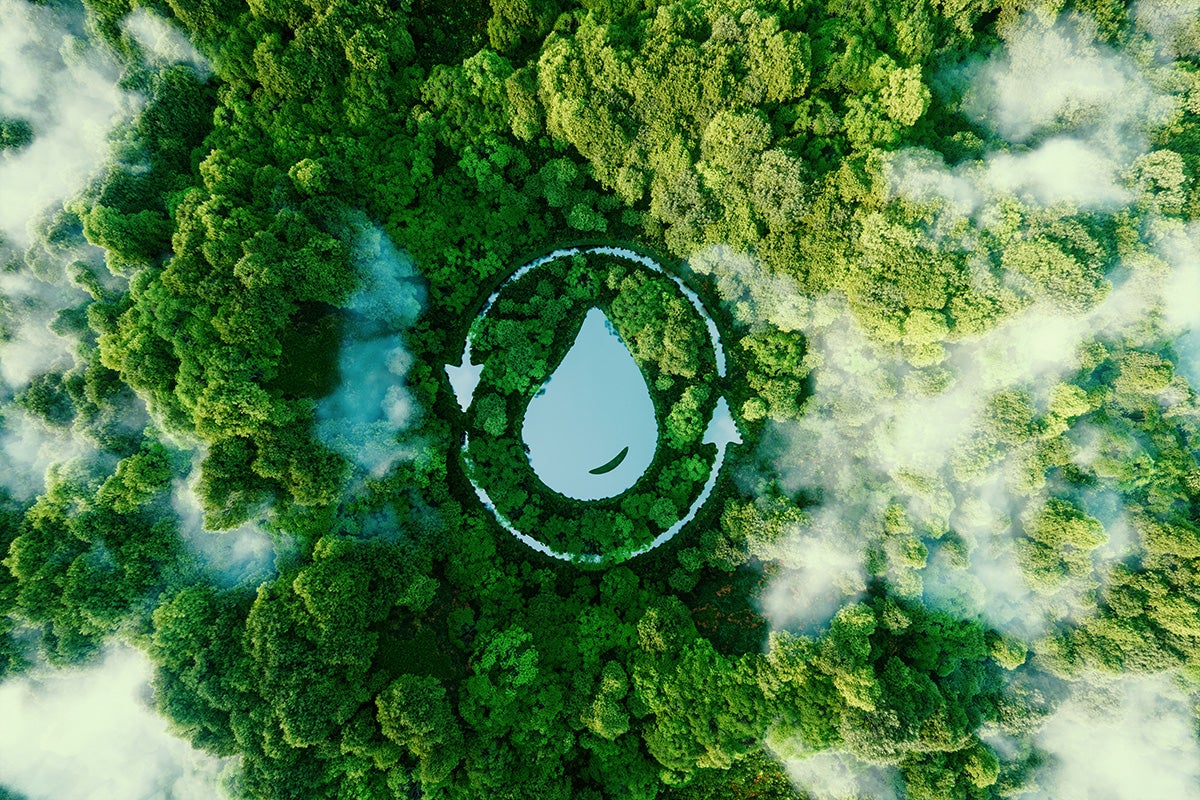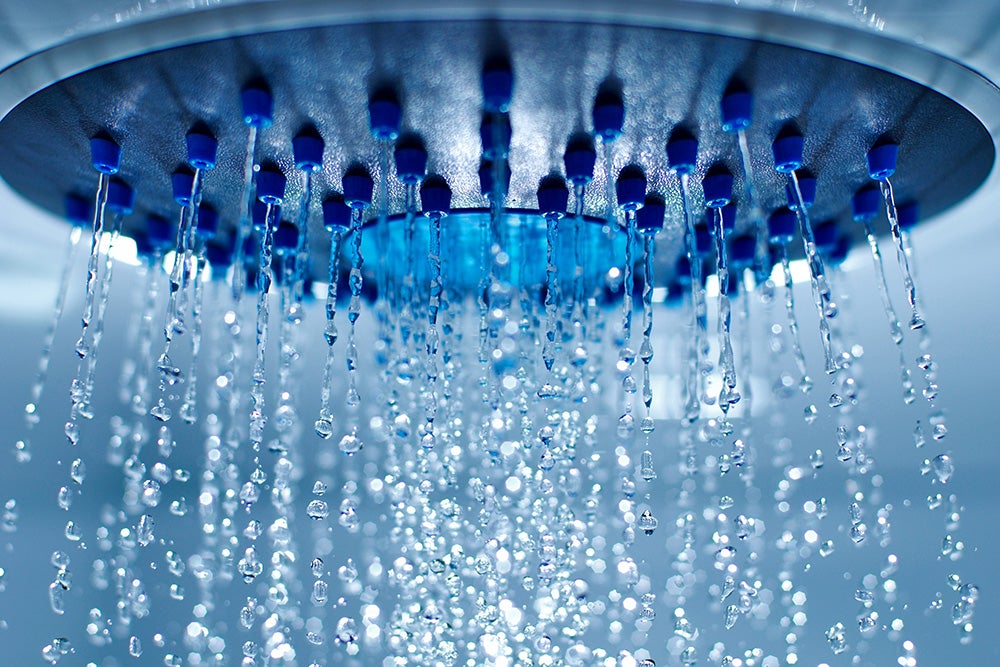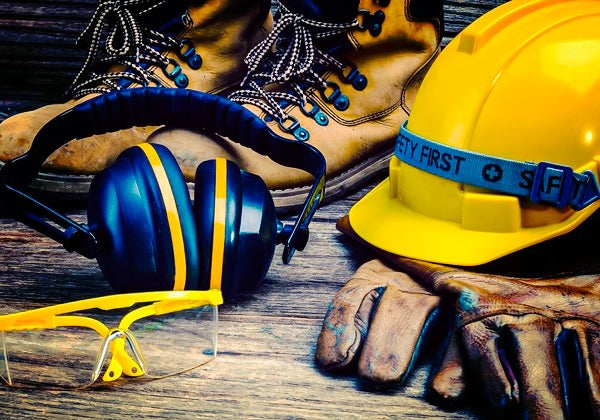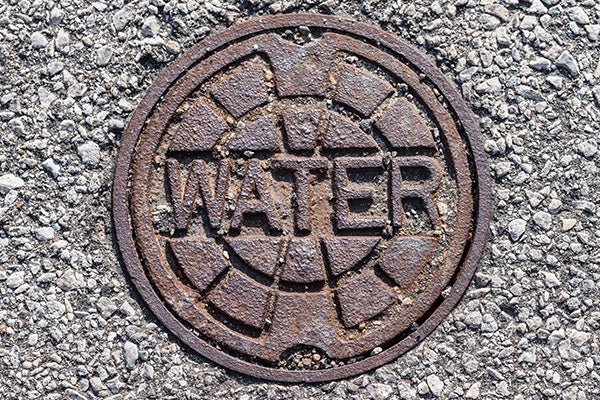Knowledge For All
Education
Providing water and wastewater services is only the start of what we do, as we have a much wider role to play in creating a healthy environment and developing a sustainable future.
The Water Cycle

Water is a precious gift shared by all.
Falling from the sky as rain, it eventually makes its way into rivers or soaks into the ground. Ultimately, it returns to the ocean and evaporates, forming rain clouds and the cycle starts over. Our role is to supply you and your family with fresh drinking water and take away your wastewater. By taking care of these essential services, we’re creating a better place for all of us to live in. Providing water and wastewater services is only the start of what we do, as we have a much wider role to play in creating a healthy environment and developing a sustainable future.
Before water can be collected from rivers, reservoirs, or wells evaporation, condensation, and precipitation must occur.
Seeing that water is in a constant cycle, it’s hard to say where it begins, but we will start with the sun.
Evaporation
The ocean is heated by the sun causing it to evaporate into water vapor. The vapor then rises into the atmosphere where it meets up with the water that has transpired from plants and soil evaporation.
Ask your students to consider what happens to a puddle when the sun shines on it.
Condensation
The cooler temperatures chill the rising water vapor, causing it to condense and form water droplets in clouds. Clouds form when water droplets and dust particles mix in the atmosphere. If it’s warm outside, have your students consider why water appears on the outside of the glass when cold water is poured into it.
On a cold day, ask your learners why there are water droplets on the inside of a window.
Precipitation
When water vapor condenses, the air can’t hold it any longer so it falls back to earth as rain, sleet, snow, or hail.
Try asking your students what part of the water cycle it is the next time it rains.
Treatment

Our Role
Our responsibility is to supply you and your family with fresh drinking water and take away your wastewater. Providing water and wastewater services is only the start of what we do, as we have a much wider role to play in creating a healthy environment and developing a sustainable future.
A lot happens at our water treatment plants to ensure that your water is safe to drink. When water enters our treatment plants, it usually goes through the following processes to eliminate “baddies.”
Screening:
The water passes through a massive metal strainer to get rid of large debris like leaves and twigs. Flocculation Approved chemicals are added to attract tiny contaminants such as dirt, natural color, and bacteria. The chemicals make a jelly-like material called floc.
Clarification:
The floc must be removed from the water, so air is bubbled through the tanks. This causes the floc to rise to the surface, creating a blanket that is skimmed off. This is known as Dissolved Air Flotation, or DAAF for short. In other plants that do not use DAF, the floc settles to the bottom of the tank and is removed through a process known as sedimentation.
Filtration:
To remove leftover floc and traces of metals such as iron and manganese, the water is filtered through layers of sand and gravel. These filters are cleaned often, usually every one to two days. Granular activated carbon is used in filter beds to remove organic material as well as any other substances that may be present in the water.
Chlorination:
The water is now treated with chlorine. Any germs that are still present are killed. To guarantee that your tap water is of the highest possible quality, a tiny amount of chlorine is left in the water as it travels to your home.
Water Distribution:
After removing the “baddies” from the collected water, it’s now ready to be sent to homes, businesses, and schools across Bedford County. We do this by using our network of pipes which allow us to transport water from one part of the region to another based on where it is needed. This ensures that your water will always be on tap. Our network of pipes also means that the water that you drink at home may not have come from the nearest source, but may have traveled many miles before reaching your tap. Think of it as a huge water vending machine that never runs out of your favorite beverage!
Collecting Wastewater:
We have an underground pipe network that collects raw sewage from the region’s residences and liquid waste from businesses. After being used, water travels to a wastewater pipe, then to a drain, and finally to a sewer pipe that connects to others to form the sewer. The wastewater reaches one of our 3 wastewater treatment plants, where we clean the water before releasing it back into the environment.
Before being discharged into rivers and streams, wastewater passes through five stages at our treatment plants.
Screening
By sending wastewater through technically designed metal grids called screens. This iswhere we remove debris and big materials such as wood, rags, paper, and plastics.
Primary Treatment
Sewage is pumped into massive tanks known as settlement tanks, where the majority the leftover solids settle to the bottom forming sewage sludge. The sludge can be composted to improve soil quality, incinerated, or digested by bacteria to produce gas that can be burned to generate energy – poo power!
Secondary treatment – stage one
The liquid sewage then flows to stage three, which includes biological treatment. The sewage flows through stone filters containing billions of “goodie” bacteria that feed on the “baddies” and eliminate all organic contaminants.
Secondary treatment – stage two
Sometimes bacteria are blended with the sewage in a tank. The tank is bubbled with oxygen so that the “goodies” may breathe and get to work.
Final Treatment
Finally, the sewage flows into our settlement tanks, where any leftover bacteria and sludge settle to the bottom. We also zap wastewater with ultra-violet light to kill any surviving bacteria.
Back Where It Came From
Returning water to nearby rivers and streams is important for our ecosystem. By taking an active role in the natural cycle, the water we use can be safely returned to rivers, streams, and ultimately the ocean.
Many of our rivers are cleaner now than since the industrial revolution over a century ago. This is because we’ve been working hard to upgrade and improve our wastewater treatment plants.
Blockages

Unclog Blockage
On this page, you’ll learn about the most common causes of blockages in Bedford, as well as what you can do to stop them from happening.
Common Plumbing Issues
Did you know that people flush the wrong things down the drain and toilet which contribute to many of the sewer clogs in Bedford County? With hundreds of miles of sewer pipes to maintain, this costs lots of money to repair each year! But with your help, we can prevent this from happening and help protect our environment.
We’ve all used a sink where the water doesn’t go down the drain as fast as it should. When you wash your hands or brush your teeth, you may notice a funny smell. If the water in your sink is slimy and has tiny bits floating in it, it’s likely that something is blocking it. This typically happens when something is disposed of down the sink that shouldn’t be. Unfortunately, it’s not a fun job to fix. The good news is that there are many things that you can do to prevent pesky drain clogs from reoccurring.
Preventing drain blockages
If you flush things that shouldn’t be or pour things that shouldn’t be down the drain, you’re risking a clogged pipe. The easiest way to stop this is to remember this rule:
Only flush the 3Ps:
- Pee
- Poo
- Paper (toilet paper)
Common blockage reasons
Here are some of the most common culprits that should never be flushed or poured down the drain.
- Grease and cooking fat: When cooking waste – fat or other oils – build up inside a pipe, it can cause drains to clog. This can result in huge fat deposits in the sewage system, dubbed “fat-burgs”, which cost lots of money to remove each year.
- Wet wipes and paper towels: Wipes clog pipes! Toilets are designed to remove human waste and toilet paper only. Even though the package says “Flushable”, these pesky things take years to degrade. Remember the rule: only flush the 3P’s – pee, poo, and paper (toilet paper).
- Dental floss: Despite its thinness, dental floss is often made of nylon or Teflon. These two materials are very strong and don’t degrade naturally. If flushed down the drain, this can cause serious environmental damage.
- Coffee grounds: When coffee grounds are mixed with liquid or grease, they make a sticky nightmare. It’s no surprise that they’re one of the biggest culprits behind clogged drains. You don’t even have to throw them away. Instead, scatter them over your garden to deter insects and give your plants a boost!
- Diapers: Diapers are made of materials that expand when they touch water. This makes them ideal for clogging drains and sewer systems. This can cause water to back up into your home from the sewer – which is not a situation that you want to be in.
How to unclog a blocked drain
Hopefully, you’ll remember what not to pour or flush down the drain and you never have to worry about unclogging a drain, but if it does happen, here are a few possible solutions.
Coat hanger fishing
- Start by taking a wire coat hanger and carefully straightening it out.
- Make a little hook on one end and get ready to go fishing.
- Thread your wire fishing rod down the drain until you reach the blockage.
- Take care not to push the gunk further down: wiggle it about and then pull it back out to see what you’ve caught.
- Once you’ve pulled as much as you can out, run hot water to help dislodge any leftover gunk and to test if it did the trick.
Baking soda and vinegar:
You’ll need a few more things for this one: A cup, baking soda, and vinegar.
- Start by mixing one-third cup baking soda and one-third cup vinegar. The mixture will start to bubble instantly.
- Pour it down the blocked drain quickly.
- The bubbling action will begin to remove the gunk from the inside of the pipe.
- Let it sit for an hour or so before flushing with hot water.
- If this doesn’t work, you may need to visit the hardware store for a chemical drain unblocked.
How we’re helping:
The BRWA takes blocked drains seriously because the damage they cause to our sewer system costs lots of money to repair each year. With hundreds of miles of pipes in the region, this is no easy job.
The best way to prevent this is to ask you to think carefully about what goes down your drain, be we know that we must do our part too. That’s why we are dedicated to improving the quality of our sewer system.
Water Pressure

How water pressure can vary in your home.
The force that pushes water through your pipes is called water pressure. It’s measured in “PSI” and is an essential part of a working water supply because it determines the flow of water from your taps. Water pressure can be affected by many things, including the height of your home and how many people in your area are using the water.
Water Itself
Water affects water pressure because water IS water pressure. Water pressure can be affected by many factors. Some can be found outside of your home, such as if there’s a leak in the pipes under the road. In this instance, we are responsible for fixing this problem. See our “Whose Pipe Is It” page for more information.
If you spot a leak, let us know immediately.
Condition of Pipes
Other factors can be found in your home, like the size and length of your pipework. The further the water has to go, the lower the water pressure will be.
Another factor can be age – particularly for hot water pipes where calcium deposits can restrict water flow.
Water Use In Your Home
Have you noticed that when you flush the toilet, the water pressure from the tap drops? In general, the more water that’s used at one time, the lower the pressure. This happens because the water is split up between several outlets.
Location of Water Storage Tank
The lower the water pressure, the closer your home is to the water storage tank. Similarly, the higher the water pressure, the lower your home is compared to the storage tank. This is because water flows more freely with the help of gravity.
Water Usage In Your Area
Water pressure may change during the day. For example, when it’s a hot day and people are using garden hoses and sprinklers, the water pressure may be lower.
This can also be true at peak hours, such as in the morning when more people are using water.
Pulsating Water Pressure
Pulsating water pressure can indicate a problem in your home’s plumbing. If you notice that the water coming out of your taps is pulsating or changing in pressure, you may have a problem with the pressure release valve supplying your home, or a loose washer in the tap where the problem is occurring.
The issue could also be caused by a waterlogged pressure tank, meaning there might be too much water and not enough air. If none of this rings any bells and the problem persists, it might be time to call a plumber.
Boost Water Pressure
Do you have poor water pressure? Follow these steps before seeking additional help. Is there planned work in your area? Water pressure can be temporarily affected by repairs happening in your area. You should receive a notification from us, but if you’re not sure, you can view our projects by clicking the link here.
Unexpected Incidents
Unplanned incidents, such as burst water main can explain a quick drop in water pressure. Check our website for updates and guidance.
Still Not Enough Pressure?
If there aren’t any issues with your home’s water supply, try these tips to increase the water pressure.
- Clean the tap: With a pair of pliers, unscrew the aerator at the end of the tap and give the parts a deep clean. Next, run the tap for a few minutes to remove any sediment in the pipe.
- For tough stains, soak the parts in water and vinegar. Do the same with your showerhead and see the difference!
- Rule leaks out: Turn off all the water in your home and then check the water meter. Water is still flowing if the small triangular or disc-shaped dial is rotating. This means that you probably have a leak. Make a note of the reading and check back in a few hours to see whether it has changed. If it has, please report it immediately.
Hot Water Pressure Lower Than Cold
The hot water pressure is sometimes slightly lower than cold due to the buildup of debris inside the pipes over time. This buildup is most commonly caused by calcium deposits, rust, and other debris in the plumbing system. The issue is especially common in homes with galvanized piping, as that material is typically more prone to corrosion than copper or PVC pipes.
Some plumbers offer an acid flushing water piping service, but a long-term solution is to test your water hardness and then install a water softener system if needed.
Hard Water

What is water hardness?
Water is a liquid so how can it be hard? That may be what you’re thinking when you hear “hard water” but that’s not what it means. The amount of dissolved minerals in your water is called water hardness, and it changes depending on where you live.
Usually, the larger amount of calcium and magnesium minerals in your water, the harder it is. There are advantages and disadvantages to both soft and hard water, but none are harmful to your health.
Why Do I Have Hard Water?
When water comes into contact with limestone, chalk, and other rocks before it’s collected, come of the minerals contained in them are absorbed by the water. The amount of minerals in your water is determined by the soil and rocks from where your water is collected.
Does Water Harness Impact Water Quality?
When it comes to tap water, the US has some of the highest standards of cleanliness and sanitation in the world. Our job is to make sure it stays that way. Hard water doesn’t pose any known health risks. In fact, daily calcium intake is vital for growth and health.
The calcium found in water is the same mineral found in milk, beans, eggs, kale, and broccoli, but in less amounts.
Solutions For Hard water in your home:
Most of the calcium in hard water can be removed by boiling water. This is because calcium hydrogen carbonate is soluble.
In homes with hard water, you can sometimes see the effect in your coffee maker. The heating element may be covered in a thin layer of limescale caused by insoluble calcium carbonate.
Limescale is an annoyance because it can clog hot water pipes and water heaters. Water softeners are often included with dishwashers to stop this from happening.
Checking the hardness of your water:
This simple test can be used to check water hardness in your home. You’ll need a clean plastic bottle with a secure cap and some dishwashing liquid.
Fill roughly a third of the bottle with fresh BRWA water from the tap. Add 8-10 drops of liquid soap and shake the bottle for a few seconds.
Now watch what happens. If you only see a few bubbles and the water looks cloudy, you likely have hard water. That’s because soap mixes with calcium and magnesium to create an insoluble layer in water (this is what makes rings around your bathtub).
There are also fewer bubbles because there is less soap. That’s why, when mixed with soap, soft water always creates lots of suds!
Do you want to know how many minerals are in your water? Contact us, we’d love to help!